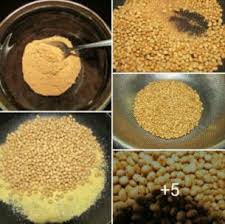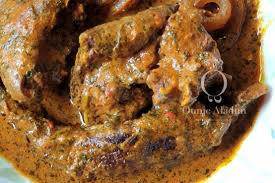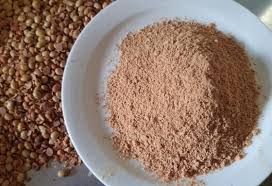Soya Beans Powder Recipes for Toddlers offer a nutritious and versatile way to introduce healthy foods into your child’s diet. Soya beans, rich in protein, fiber, vitamins, and minerals, are an excellent choice for growing toddlers who require balanced nutrition for their development. Soya beans powder, made from ground, roasted soybeans, is an ideal ingredient that can easily be incorporated into various meals, ensuring toddlers receive essential nutrients while enjoying delicious flavors.
One of the biggest challenges parents face is getting toddlers to eat a variety of foods, especially when it comes to protein sources. Soya beans powder can help bridge this gap by providing a plant-based protein that is gentle on the stomach and easy to digest. Additionally, it is an excellent alternative for toddlers with dairy allergies or lactose intolerance, as it is naturally free from lactose. The mild, nutty flavor of soya beans powder makes it adaptable for both sweet and savory dishes, allowing for creativity in the kitchen while catering to your toddler’s taste preferences.
Using soya beans powder in recipes offers multiple benefits. Its high protein content supports muscle growth and development, while the fiber promotes healthy digestion, helping to prevent constipation, a common concern for toddlers. Moreover, soya beans are packed with essential fatty acids, including omega-3 and omega-6, which are crucial for brain development and cognitive function. The powder is also rich in iron, calcium, and other vital nutrients, making it an excellent addition to meals that lack these essential components.
Parents can use soya beans powder in various recipes that are not only nutritious but also appealing to toddlers. It can be mixed into porridge, pancakes, or smoothies, providing a delicious boost of protein and flavor. For example, adding a spoonful of soya beans powder to a fruit smoothie creates a creamy, satisfying drink that toddlers will love. When making pancakes, incorporating the powder can enhance the texture while adding a nutritional punch, making breakfast both tasty and healthful.
Beyond breakfast, soya beans powder can be used in lunch and dinner recipes. It can be added to vegetable purees, soups, and sauces, enriching the dishes while ensuring your toddler receives adequate nutrition. Creating homemade veggie burgers or meatballs using soya beans powder is another excellent option that toddlers will find enjoyable and fun to eat. Additionally, baking with soya beans powder can yield delicious muffins and cookies, making snack time both nutritious and delightful.
Incorporating soya beans powder into your toddler’s diet can be a simple and effective way to ensure they receive essential nutrients while exploring new tastes and textures. With countless recipes and serving ideas available, you can introduce this superfood into your child’s meals, making healthy eating an enjoyable adventure. By experimenting with different recipes and meal ideas, you will not only provide your toddler with a solid nutritional foundation but also foster a love for healthy foods that will last a lifetime.
Here’s a comprehensive guide covering the nutritional benefits of soya beans for toddlers, how to prepare soya beans powder at home, and a simple recipe for soya beans powder porridge for toddlers.
Nutritional Benefits of Soya Beans for Toddlers

1. Rich Source of Protein: Soya beans are an excellent source of plant-based protein, which is essential for toddlers’ growth and development. Protein is crucial for building muscles and repairing tissues.
2. Healthy Fats: Soya beans contain healthy unsaturated fats, which support brain development and overall health. These fats are important for cognitive functions and energy.
3. Vitamins and Minerals: Soya beans are packed with essential vitamins and minerals, including vitamin B complex (like folate, which is crucial for growth), vitamin K (important for bone health), and minerals such as calcium, iron, and magnesium, which support various bodily functions.
4. Dietary Fiber: Soya beans are high in dietary fiber, which aids in digestion and helps prevent constipation. A healthy digestive system is vital for toddlers, who are still developing their eating habits.
5. Isoflavones: Soya beans contain isoflavones, which are antioxidants that can provide health benefits, such as reducing the risk of certain diseases. While research is ongoing, they may also support hormonal balance.
6. Bone Health: The calcium and magnesium found in soya beans contribute to strong bone development, which is crucial during the toddler years when bones are rapidly growing.
How to Prepare Soya Beans Powder at Home
Ingredients: Raw soya beans
Equipment:
i. A blender or food processor
ii. A fine mesh sieve or cheesecloth
iii. An oven or dehydrator (optional)
Step-by-Step Process:
1. Selecting and Cleaning: Choose high-quality raw soya beans. Rinse them under cold water to remove any dirt or impurities.
2. Soaking: Soak the cleaned soya beans in water for at least 8-12 hours or overnight. This helps soften the beans and reduces cooking time.
3. Cooking: After soaking, drain the beans and place them in a pot. Cover with fresh water and bring to a boil. Reduce the heat and simmer for about 30-45 minutes, or until the beans are tender. Drain the cooked beans and let them cool.
4. Drying (Optional): If you prefer a powder with a longer shelf life, you can dry the cooked beans in an oven or dehydrator at a low temperature (around 150°F or 65°C) until completely dry. This may take several hours. If you don’t dry them, proceed to the next step with the cooked beans.
5. Grinding: Once cooled (and dried if you chose that method), add the soya beans to a blender or food processor. Blend until you achieve a fine powder. You may need to do this in batches to avoid overloading the blender.
6. Sifting: Use a fine mesh sieve or cheesecloth to sift the powder. This removes any larger particles and gives you a smooth consistency.
7. Storing: Store the soya beans powder in an airtight container in a cool, dry place. Properly stored, it can last for several months.
Read Also: 13 Medicinal Health Benefits of Arum cylindraceum (tuberous wild calla)
Soya Beans Powder Porridge for Toddlers

Ingredients:
i. 2 tablespoons soya beans powder
ii. 1 cup water or milk (dairy or non-dairy)
iii. Sweetener (optional, such as honey or maple syrup) – avoid honey for children under 1 year
iv. Optional add-ins: mashed bananas, pureed fruits, or a pinch of cinnamon
Instructions:
1. Mix Powder and Liquid: In a small saucepan, combine the soya beans powder and water or milk. Stir well to avoid lumps.
2. Cook the Mixture: Place the saucepan on medium heat and continuously stir the mixture as it heats. This prevents the powder from sticking to the bottom and forming clumps.
3. Thicken the Porridge: Cook for about 5-7 minutes until the porridge thickens to your desired consistency. If it becomes too thick, you can add a little more liquid to achieve the right texture.
4. Sweeten (Optional): If desired, stir in a sweetener like honey or maple syrup once removed from heat. You can also add mashed bananas or other pureed fruits for added flavor and nutrients.
5. Cool and Serve: Allow the porridge to cool slightly before serving it to your toddler. Ensure it is not too hot to avoid burns.
6. Storage: If you have leftovers, store them in an airtight container in the refrigerator for up to 2 days. Reheat gently before serving.
Soya Beans Powder Muffins: Healthy Snack Option
Soya beans powder muffins are a nutritious and delicious snack that can easily fit into a healthy diet. They are packed with protein, fiber, and essential vitamins and minerals, making them an excellent choice for both kids and adults.
1. Nutritional Benefits: Soya beans powder is high in protein, which is vital for growth and development, particularly in children. It contains essential amino acids that support muscle growth and repair. Additionally, the fiber content helps promote digestive health and keeps you feeling full longer, making these muffins a great option for snacking.
2. Flavor and Versatility: The mild flavor of soya beans powder blends well with various ingredients, allowing you to customize your muffins. You can add fruits, nuts, or spices like cinnamon or vanilla for extra flavor. Consider mixing in mashed bananas or applesauce for added moisture and natural sweetness.
3. Simple Recipe Idea: A basic recipe might include soya beans powder, whole wheat flour, baking powder, eggs, milk, and your choice of sweeteners like honey or maple syrup. Mix the dry ingredients, then combine them with the wet ingredients and bake at 350°F (175°C) until golden brown.
4. Quick Snack Option: These muffins can be prepared in batches and stored for later use, providing a quick and healthy snack option for busy days. They can be enjoyed plain or paired with yogurt or fruit for a more substantial snack.
Soya Beans Powder and Fruit Mix for Toddlers
Incorporating soya beans powder into fruit mixes can create a nutritious snack that toddlers will enjoy. The combination of fruits and soya beans powder offers a range of vitamins, minerals, and healthy fats.
1. Nutritional Profile: This mix not only provides protein from the soya beans powder but also offers vitamins and antioxidants from fruits such as bananas, apples, or berries. These nutrients are essential for toddlers as they support overall growth, immune function, and cognitive development.
2. Easy Preparation: Simply blend soya beans powder with your choice of fruit and a liquid such as milk or yogurt to create a smooth and creamy mixture. You can also add a bit of honey or yogurt for sweetness, making it more appealing to toddlers.
3. Serving Suggestions: Serve the fruit mix as a smoothie or use it as a topping for whole grain pancakes or oatmeal. This can make the meal more exciting while ensuring your toddler receives a well-rounded diet.
Read Also: 12 Medicinal Health Benefits of Oats (Avena Sativa)
Tips for Introducing Soya Beans Powder to Your Toddler

Introducing soya beans powder to toddlers can be done gradually and creatively. Here are some helpful tips:
1. Start Small: Begin with small amounts of soya beans powder mixed into familiar foods. This can help your toddler get used to the taste and texture without overwhelming them.
2. Mix with Favorites: Combine soya beans powder with foods your toddler already enjoys, such as yogurt, smoothies, or oatmeal. This familiar base can make it easier for them to accept the new ingredient.
3. Create Fun Recipes: Involve your toddler in the kitchen by creating fun recipes together, such as muffins, pancakes, or fruit smoothies. Engaging them in the process can make them more interested in trying the new foods.
4. Monitor for Reactions: As with introducing any new food, observe for any potential allergic reactions or digestive issues. If your toddler experiences any discomfort, consult a healthcare provider for guidance.
Storage and Shelf Life of Soya Beans Powder
Proper storage of soya beans powder is essential to maintain its freshness and nutritional quality.
1. Storage Conditions: Store soya beans powder in an airtight container in a cool, dry place, away from direct sunlight. This helps prevent moisture absorption and protects it from rancidity.
2. Refrigeration: If you purchase large quantities or plan to store it for an extended period, consider refrigerating or freezing the powder. Make sure it is well-sealed to prevent moisture and odors from affecting its quality.
3. Shelf Life: Generally, soya beans powder can last for about 6 to 12 months when stored properly. Always check for signs of spoilage, such as an off smell or discoloration, before use.
4. Expiration Date: Always check the expiration date on the packaging. If you notice any changes in texture, color, or smell, it’s best to discard the powder to ensure safety.
Do you have any questions, suggestions, or contributions? If so, please feel free to use the comment box below to share your thoughts. We also encourage you to kindly share this information with others who might benefit from it. Since we can’t reach everyone at once, we truly appreciate your help in spreading the word. Thank you so much for your support and for sharing!
Read Also: New Product Development and Marketing Mix






